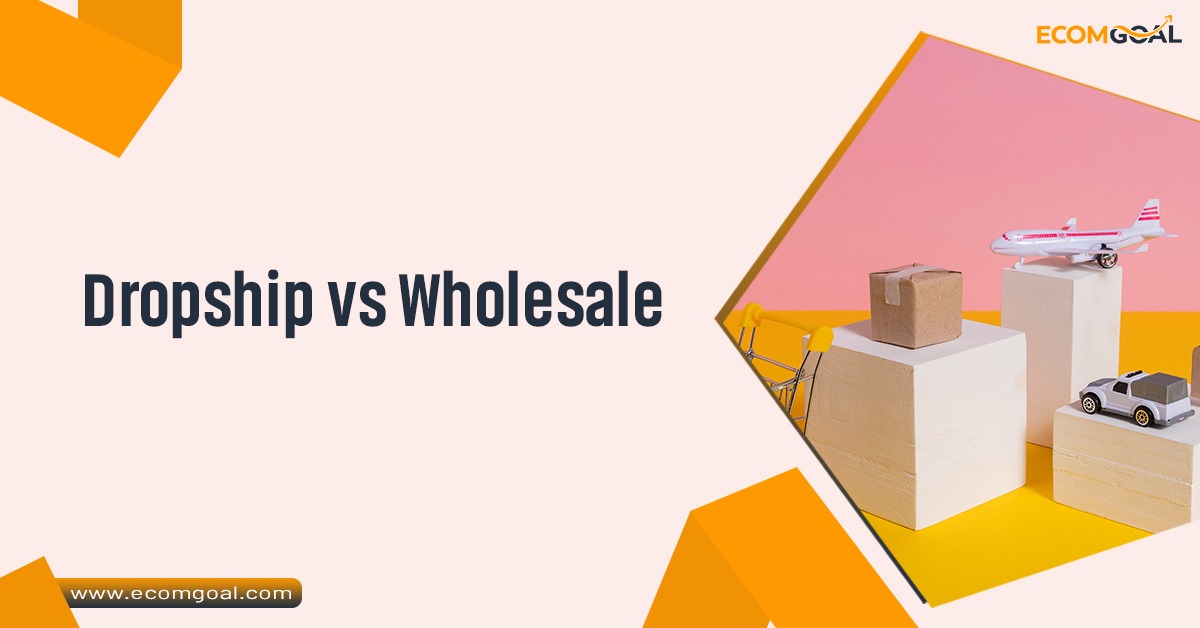
When venturing into the world of e-commerce, one of the most critical decisions you’ll face is choosing the right business model. Two of the most popular options are dropshipping and wholesale. While both models allow you to sell products online, they differ significantly in terms of logistics, investment, profit margins, and operational challenges. In this blog, we’ll explore the key dropship vs wholesale, weigh their pros and cons, and help you determine which approach might best suit your business goals.
What is Dropshipping?
Dropshipping is a fulfillment method where you, as the retailer, don’t keep inventory of the products you sell. Instead, when a customer places an order on your online store, the order is forwarded to a third-party supplier or manufacturer who ships the product directly to the customer.
Key Features of Dropshipping:
- No Inventory: Retailers don’t need to stock or store products.
- Low Upfront Investment: You only pay for a product after you’ve sold it.
- Flexibility: You can offer a wide variety of products without worrying about storage space.
- Ease of Entry: Setting up a dropshipping business requires minimal initial effort and capital.
What is Wholesale?
Wholesale involves purchasing products in bulk right away from manufacturers or distributors at discounted prices. As a retailer, you stock these products and sell them to your customers at a marked-up price. In this model, you’re responsible for managing inventory, warehousing, and shipping.
Key Features of Wholesale:
- Bulk Purchasing: Requires buying inventory in large quantities upfront.
- Higher Control: Retailers manage stock and shipping processes.
- Potential for Better Margins: Buying in bulk often results in lower per-unit costs, increasing profit margins.
- Established Relationships: Building a relationship with suppliers can lead to long-term benefits like exclusive deals or priority orders.
Comparing Dropshipping and Wholesale
1. Initial Investment
- Dropshipping: Dropshipping is an attractive option for beginners because of its low upfront costs. Since you don’t have to purchase inventory or rent warehouse space, the initial financial risk is minimal. Your primary expenses are building your online store, marketing, and paying for sold items.
- Wholesale: Wholesale typically requires a significant upfront investment. You need to purchase inventory in bulk, which can be costly depending on the product. Additionally, you may need to spend on storage facilities, packaging, and shipping materials.
2. Inventory Management
- Dropshipping: One of the biggest benefits of dropshipping is the lack of inventory management. The supplier takes care of storing and shipping products, freeing you from logistical headaches. However, this also means you have less control over stock levels and shipping times.
- Wholesale: Wholesale requires meticulous inventory management. You’ll need to track stock levels, reorder products as needed, and manage storage. While this adds complexity, it also gives you full control over your inventory and fulfillment process.
3. Profit Margins
- Dropshipping: Profit margins in dropshipping tend to be lower because you’re paying for products on a per-order basis and often at higher prices than wholesale. Additionally, many suppliers charge extra fees for handling and shipping.
- Wholesale: Wholesale offers higher profit margins due to the discounted prices of bulk purchases. You can control pricing strategies more effectively, making it easier to achieve a healthy profit margin.
4. Product Selection and Scalability
- Dropshipping: Dropshipping allows you to offer a vast array of products without worrying about storage. This makes it easy to test different products and niches. However, scaling can be challenging if your supplier struggles to keep up with increased demand.
- Wholesale: While wholesale requires more effort to diversify your product range due to storage constraints, it offers greater scalability. With proper inventory management and fulfillment systems in place, you can handle higher order volumes efficiently.
5. Customer Experience
- Dropshipping: In dropshipping, customer experience can be hit-or-miss. Since you rely on third-party suppliers for shipping, delays or errors can occur, which are often out of your control. Additionally, the lack of branding on packages can make it harder to create a strong brand identity.
- Wholesale: Wholesale gives you full control over the customer experience. From packaging to shipping speed, you can ensure consistency and quality. This control also allows for branded packaging, enhancing your brand’s reputation and customer loyalty.
6. Risk Factors
- Dropshipping: The primary risks in dropshipping are supplier reliability and market saturation. Since the barrier to entry is low, many sellers may compete for the same products, driving prices down. Additionally, if your supplier fails to deliver or runs out of stock, it can harm your business.
- Wholesale: With wholesale, the main risks are overstocking and capital lock-up. Buying inventory in bulk means you’re tying up significant funds, and unsold stock can lead to losses. Additionally, maintaining a warehouse and handling logistics comes with ongoing costs and responsibilities.
Pros and Cons
Dropshipping Pros:
- Low startup costs.
- Minimal operational effort.
- Flexibility to switch products and niches.
- No need for storage or logistics management.
Dropshipping Cons:
- Lower profit margins.
- Less control over inventory and shipping.
- High competition and market saturation.
- Reliance on third-party suppliers.
Wholesale Pros:
- Higher profit margins.
- Greater control over the customer experience.
- Opportunity for branded packaging and customization.
- Stronger supplier relationships.
Wholesale Cons:
- High upfront investment.
- Inventory management challenges.
- Risk of unsold stock.
- Storage and logistical responsibilities.
Which Model is Right for You?
The choice of dropship vs wholesale ultimately depends on your business goals, budget, and willingness to manage operations.
- Choose Dropshipping if: You’re a beginner with limited funds, want to minimize risk, and are exploring different product niches. Dropshipping is also ideal if you prefer a hands-off approach to logistics.
- Choose Wholesale if: You have the capital to invest upfront, are confident in your product selection, and want greater control over your business. Wholesale is better suited for those aiming to build a long-term brand with higher profit margins and superior customer experience.
Final Thoughts
Both dropshipping and wholesale have their unique advantages and challenges. By understanding these differences in dropship vs wholesale and evaluating your resources and goals, you can choose the model that aligns best with your business aspirations. Regardless of which path you take, success in e-commerce requires dedication, strategic planning, and a focus on delivering value to your customers. Choose wisely, and you’ll be on your way to building a thriving online business.

Hello, I am an E-commerce Expert with extensive experience providing services to numerous e-commerce brands and individuals since 2017. My primary areas of expertise include the Amazon, Walmart, and Shopify marketplaces. Linkedin
